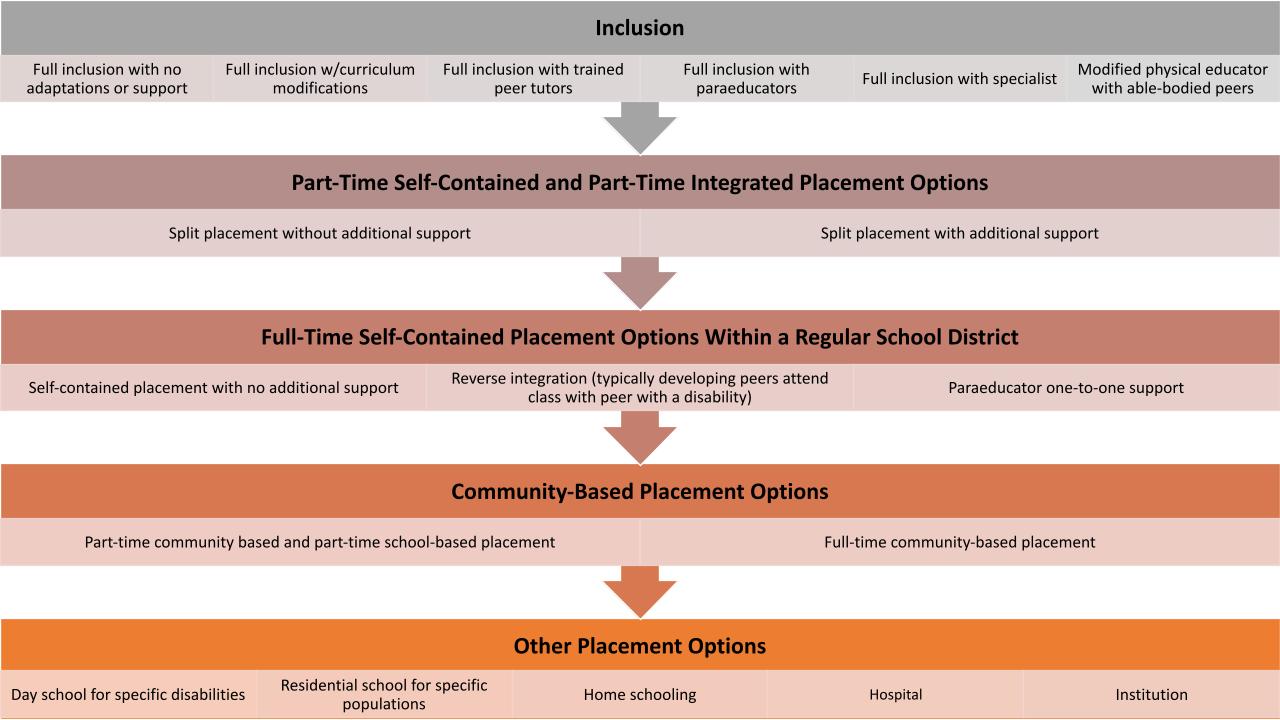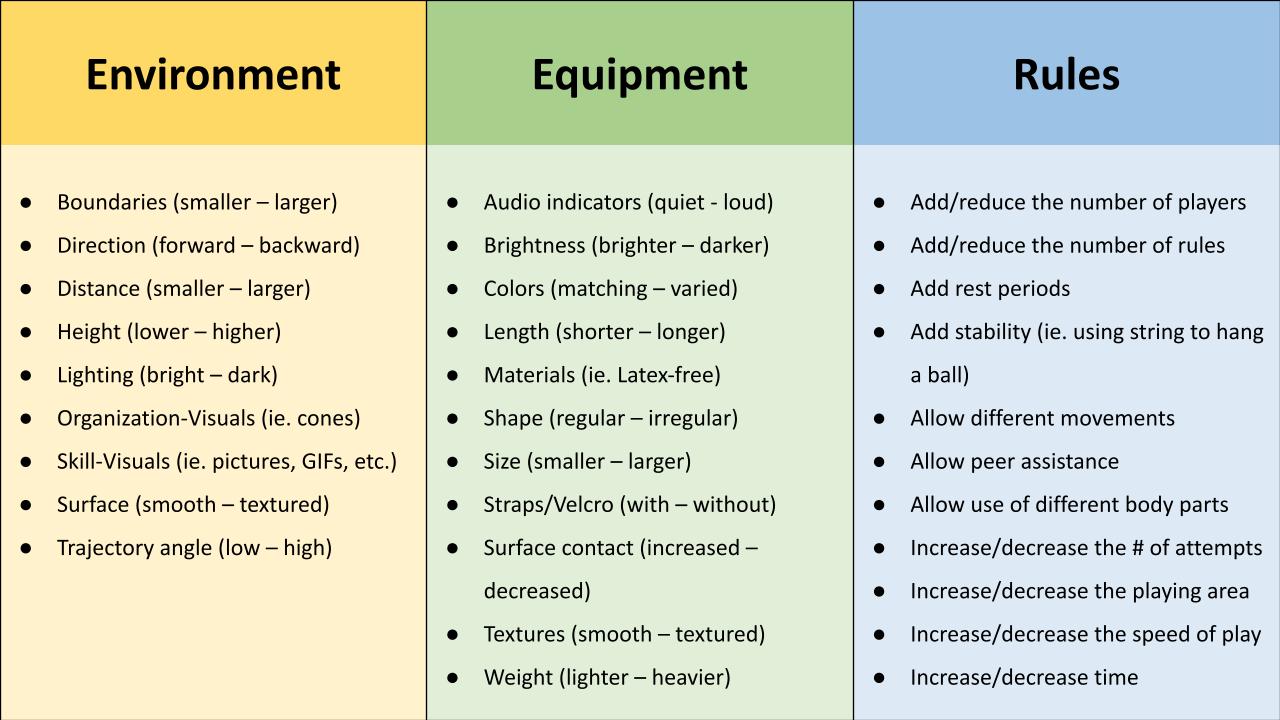Adapted Physical Education
Adapted Physical Education (APE) is physical education that has been modified to fit the needs of individuals with various physical and intellectual disabilities.
Students receive Individualized Education Plans (IEP’s) that indicate the support needed to enhance the psychomotor, cognitive, affective, and health related domains. In some circumstances the APE teacher works alongside a Physical Therapist and Occupational Therapist in their school/community to implement evidence-based practices.
APE also utilizes the Least Restrictive Environment (LRE) approach, which states that learners with disabilities must be taught in the least restrictive environment in order to be successful. This can range from full inclusion in a traditional class to teaching in a one on one setting.
Students receive Individualized Education Plans (IEP’s) that indicate the support needed to enhance the psychomotor, cognitive, affective, and health related domains. In some circumstances the APE teacher works alongside a Physical Therapist and Occupational Therapist in their school/community to implement evidence-based practices.
APE also utilizes the Least Restrictive Environment (LRE) approach, which states that learners with disabilities must be taught in the least restrictive environment in order to be successful. This can range from full inclusion in a traditional class to teaching in a one on one setting.
|
Factors Affecting Performance in Physical Education:
|
APE at Green Lake Elementary
|

